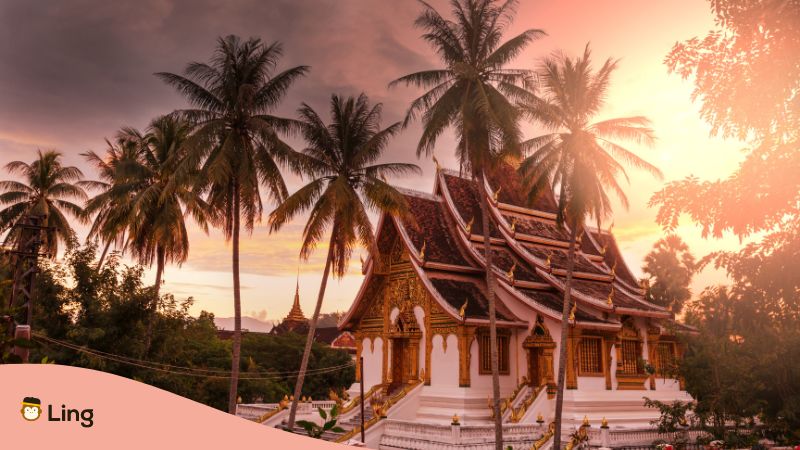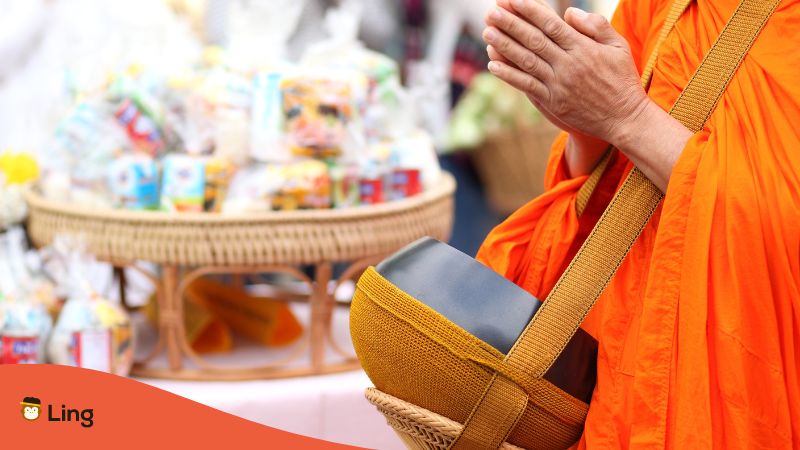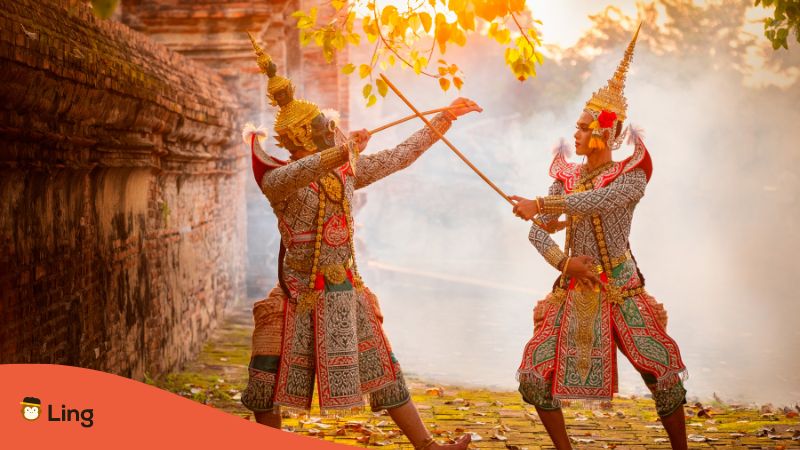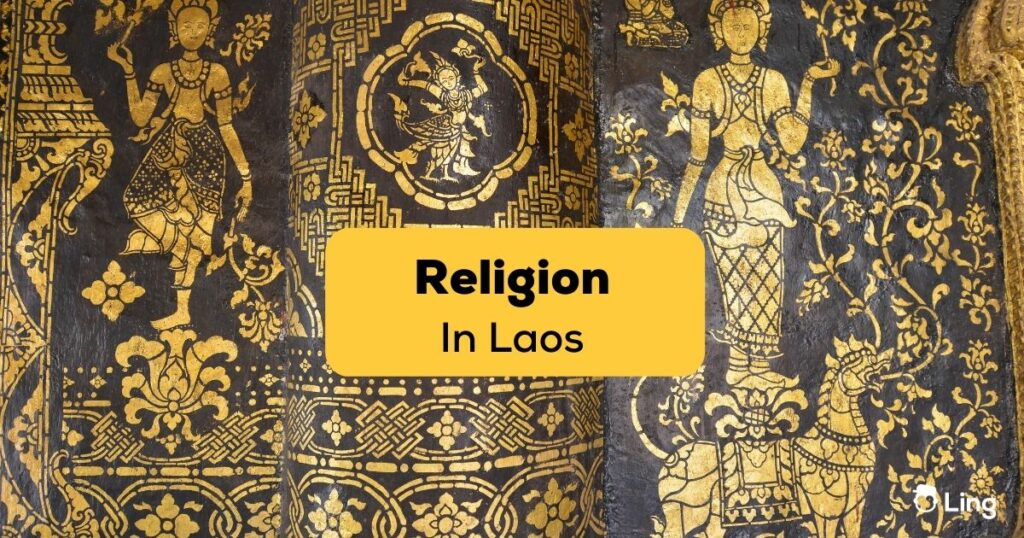Did you know that religion in Laos (ສາທາລະນະລັດ ປະຊາທິປະໄຕ ປະຊາຊົນລາວ) is as diverse as the country’s geography?
Apart from the national capital Vientiane (Viangchan – ວຽງຈັນ), and some other cities like Savannakhet and Luang Prabang, most of the country is rural land tied closely to nature. This is probably one of the reasons why Laotians are religious as well as ritualistic people. Interesting, right?
Beliefs And Religions In Laos
The majority of South East Asia is inhabited by adherents of Islam, followed closely by Buddhists and Hindus. Laos, however, is a Buddhist-majority nation, with more than 50% of its population being Theravada Buddhists. Theravada Buddhism (ພຸດທະສາສະໜາ) was the state religion of the ruling kingdom of Laos before the country became a socialist republic.
In Laos, the clergy, called Sangha (ສັງຂານ), and the order of the Buddhist monks enjoy a stature similar to the political hierarchy of the country. Doesn’t that sound interesting? But before we dive into the religious communities residing in Laos, let us first take a cursory look at the country’s ethnic demographics. Because, yes, demographics play quite a significant role in the Laotian ethnic-religious context.

Different Religions In Laos
There are 48 ethnic minority groups in Laos that follow the Tai folk religion or the ‘religion of the spirits’ (sasna phi – ສາສນາຜີ). Most of its followers are the Tai people from the country’s northern regions, such as the Thai Dam and Thai Daeng. Mon-Khmer and Tibeto-Burman groups also have followers of this religion amongst them.
Apart from this and Theravada Buddhism, the remaining Laotians are the Roman Catholics, Protestants, Muslims, Baha’is, Mahayana Buddhists, and a small number of Confucianists, among other religious groups. Hindus and Jews form a minute minority religion in the country. Let us find out about the main religions practiced in Laos.

Buddhism In Laos
Buddhism came to this country in the eighth century by the monks of the Mon ethnicity. By the 14th century, it had flourished thanks to the patronage of many Laotian kings. 5000 Buddhist temples belonging to Theravada and Mahayana Buddhist groups standing tall in the country today are proof enough. Pha That Luang stupa (Pha Thadruang – ຜາທາດຫຼວງ) is the most significant and sacred Buddhist temple in the country. This Lao-style stupa is situated in Vientiane and is the focal point of the That Luang festival.
Almost every Buddhist man spends some time in his life, even if only for a few days, as a novice (unordained monk) at local Buddhist temples or Vats (ວັດ). These men mainly belong to the Lao Loum and Lao Lom ethnic groups. At the age of 20, they are ordained as monks and are expected to abide by the many rules laid down by the Sangha.
It is a profoundly sublime sight to see the saffron-robed monks (Phrasong – ພຣະສົງ) carrying a large alms bowl and walking in a straight line early in the morning. Locals line up by the roadside, kneeling before the monks, to make an offering of sticky rice. This entire ceremony is known as Sai Bat or Tak Bat.
Some women, particularly widows, also join the Sangha and are known as Buddhist nuns (Phikkuni – ຜາທາດຫຼວງ). These men and women resolve to live a contemplative and ascetic life and learn to practice detachment or liberation (Kan Podpony – ການປົດປ່ອຍ) – the basic tenet of the Buddha’s preaching.
Today, though the majority religion, Buddhism in Laos sees a lot of inter-mixing thanks to various ethnicities that have migrated to the country for centuries. This implies that Buddhist religious activity is not mutually exclusive to other religious affairs. And above all, it is free from religious persecution. For example, Buddhist Laotians can quite easily partake in ancestor worship while maintaining their religious affiliation.

Tai Folk Religion
This is an umbrella term for the indigenous religion practiced by many ethnic groups like Tai-Kadai, Khmu, Mon-Khmer, and Tibeto-Burmese. Among Laos, Lao Theung and Lao Sung people are followers of the Tai folk religion.
This religion of the spirits (sasna phi – ສາສນາຜີ) is pantheistic and polytheistic. Simply put, its followers pray to many entities or beings, not just one being or God. Phi translates into ‘spirit.’ These followers also believe in ancestor worship while also dabbling with animist beliefs. All in all, folk religions are about one’s connection with nature and the local community.
Followers of folk religions have spirit huts built (called Phukhun Vad – ພູຄູນ ວັດ) in the shared community grounds. These huts are believed to house the phi of the local deities and are given offerings of food and flowers to keep them happy and at peace. Many other ethnic groups also practice similar animist rituals, especially when dealing with natural disasters and diseases.
In most of these ethnic communities, priests are the religious leaders who conduct household ceremonies and other religious activities. However, for curing rituals, shamans are called upon. Shamans are healers who dabble with spirit guides and spirit animals, phi and khwan (ຂວັນ), to bring about healing and other forms of relief to the community.
Other Religions In Laos
Apart from Buddhist groups, many other religious organizations are deeply embedded in the Laotian lifestyle. As per government officials, the Lao Evangelical Church is the largest registered Christian church in Laos, with almost 1,20,000 members. Another significant monument is the Roman Catholic Church of Laos, with approximately 50,000 members. This points out that Christians comprise 2% of the total Laotian population.
According to local authorities, around 8000 Laotians are adherents of the Baha’i faith. It was the newest religion to enter the country in 1955 and gradually made its way to the construction of four significant centers of the Baha’i faith. As for Islam, Muslims form only 0.01% population of Laos. Almost all of them are permanent residents who migrated from other neighboring countries. They are also a fine example of the international religious freedom granted to them. These Muslims are represented mainly by two mosques situated in Vientiane. Laotian Muslims are an ethnically diverse group consisting of ethnic Lao, Chin Haw, Chams, Tamils, and Pashtuns.

Want To Learn Lao With Ling?
Wasn’t this a fascinating read bout the Laos religion, its many facets, and the religious freedom granted to the Laotians? Curious to know more about Laos and the Laotians? Well, the best way would be to immerse yourself in learning the Lao language, as a language holds to key to any culture’s nuances.
You can start your learning journey by downloading the free Ling app on your phone from the Google Play Store or Apple App Store. Come on, get going! A fascinating world is waiting to be discovered!



































































